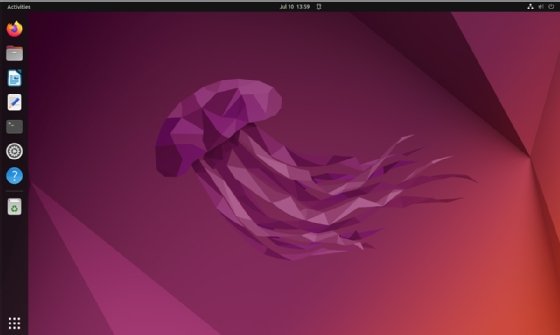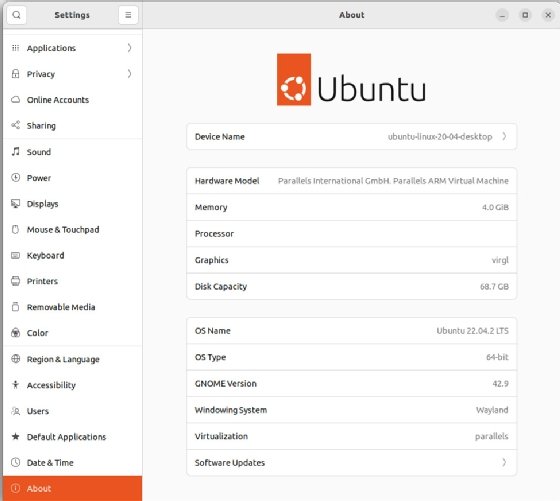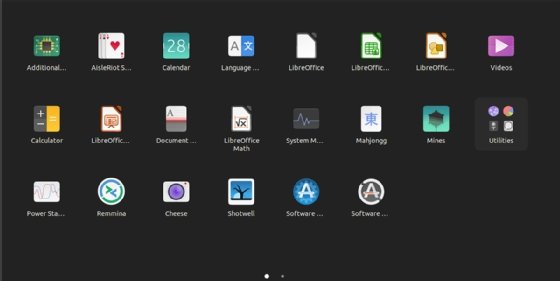Ubuntu
What is Ubuntu?
Ubuntu (pronounced oo-BOON-too) is a free, open source operating system (OS) based on Debian Linux. It was first released in 2004 when Mark Shuttleworth and a small team of Debian developers founded Canonical and then launched the Ubuntu project. Canonical released its first official version of the OS -- Ubuntu 4.10 -- in October 2004. The word ubuntu comes from the southern African Nguni languages and translates as "humanity to others."
Canonical set out to build a desktop OS that was easier to use than Debian or other Linux distributions. Its effort has proven to be successful, and Ubuntu is still considered a good distribution for beginners. However, Ubuntu is now also used for servers, cloud platforms and internet of things (IoT) devices, with Canonical offering four primary Ubuntu editions:
- Ubuntu Desktop. The Desktop edition includes a user-friendly graphical interface for working with the OS, providing users with an experience comparable to Windows or macOS. Ubuntu Desktop powers millions of computers worldwide. Canonical provides an optional subscription-based package that provides enterprise-grade support.
- Ubuntu Server. The Server edition is a scalable system used in all types of data centers and cloud environments. It can be deployed on a Kubernetes cluster, OpenStack cloud or 50,000-node render farm. The OS runs on major architectures, such as x86, Arm and Power10.
- Ubuntu Core. The Ubuntu Core edition is a lean OS that can be embedded in IoT and edge devices. It is a fully transactional OS optimized for IoT-embedded systems. Ubuntu Core has a small footprint, provides advanced security, is fully containerized and offers low-touch device recovery.
- Ubuntu Cloud. The Cloud edition provides optimized, certified server images for cloud platforms, such as Microsoft Azure, Amazon Web Services, Google Cloud Platform, IBM Cloud and Oracle Cloud. Canonical also offers enterprise-grade support and management tools.
Canonical releases an interim version of Ubuntu every six months. Those editions are production-quality releases that Canonical supports for nine months. Every fourth release -- every two years -- Canonical publishes an enterprise-grade release that receives long-term support (LTS). For each LTS release, Canonical provides the following services:
- Maintain the base packages and provide security updates for 10 years.
- Perform standard security maintenance for five years and make maintenance updates publicly available without a subscription.
- Offer an additional five years of Expanded Security Maintenance, which includes 10 years of security maintenance for the Universe repository.
- Offer the Ubuntu Pro subscription with the full 10-year Ubuntu LTS lifecycle package.
According to Canonical, about 95% of all Ubuntu installations are LTS releases. The most recent LTS edition is Ubuntu 22.04 LTS (Jammy Jellyfish), which was released in April 2022.
Ubuntu Desktop
Ubuntu Desktop is a popular and readily available Linux distribution. The desktop graphical user interface makes it easy for users to get started with Linux and navigate the Ubuntu system. The interface is based on the GNU Network Object Model Environment (GNOME, pronounced gah-NOHM), which includes the components necessary to navigate the interface and configure system settings. It also includes a set of Linux applications. Figure 1 shows the desktop in Ubuntu 22.04 LTS.

The GNOME interface makes Linux simple to use, even if users aren't administrators or programmers. They can easily access the tools they need to manage the environment and work with the applications they need to be productive. Users can also install additional apps, as they can with Windows or macOS.
At the left of the Ubuntu screen is a sidebar called the Dock. From the Dock, users can navigate the interface and find the tools they need. They can also customize the Dock with specific shortcuts. For example, the Dock in Figure 1 contains an icon for the Settings app. By clicking on the Settings icon, a user can view and update various configuration settings, such as those related to displays, privacy, power, sound, sharing and many other features.
Figure 2 shows the Settings app with the About tab selected, which displays details about the current Ubuntu installation.

To access an application not included in the Dock, a user can click the Applications icon at the bottom of the Dock to open another window that displays the first set of applications, as shown in Figure 3. A user can click an icon to launch the associated application or scroll to the next screen to view more applications. Users can also search for a specific application.

Ubuntu also ships with the Files app, which makes it easy to navigate the system's directory structure, similar to how users can work with Windows File Explorer or macOS Finder. Figure 4 shows the Files app with the Home directory selected. Users can navigate both files and folders, carrying out a variety of tasks, such as moving or copying them, viewing their properties, renaming them or depositing them in the trash.

Ubuntu Desktop also comes with tools for working with the system's environment. For example, System Monitor lets users view information about running processes and system resource usage, and the Disks utility provides tools to manage the computer's disks. The Terminal app enables running commands at a command prompt, which can benefit more advanced users.
Ubuntu flavors
In addition to the primary Ubuntu editions, the OS is available in other variants called flavors, unique editions created with their own features, settings and default applications. All flavors share a core set of Ubuntu packages, and they all use the same repository for downloading updates. Even so, each flavor is a unique system.
For example, one of the flavors is Kubuntu, which incorporates KDE Plasma Workspace rather than GNOME for its desktop environment. Kubuntu also uses the Qt toolkit for its software, helping to provide a modern system for home and office use. Lubuntu is another available flavor that doesn't include GNOME. Instead, it uses Lightweight X11 Desktop Environment to create a system that is faster, more lightweight and more energy-efficient than other Ubuntu variants.
Canonical currently lists 10 flavors that vary in focus. Ubuntu Studio, for example, targets users who create audio, video or graphic content, while Ubuntu Kylin is geared for Chinese speakers looking for a Windows-like experience. Canonical also lists several flavors that are deprecated, including Kubuntu Mobile and Ubuntu GNOME.
Compare Ubuntu vs. Red Hat Linux distributions and Ubuntu snap vs. apt package managers.






